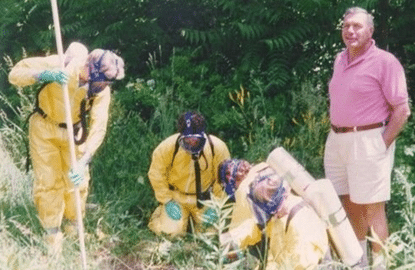Originally posted on May 14, 2014 @ 8:25 PM

Making Objects Safe or People Safe
I often ask people in risk and safety training as my first question, ‘When you walk on site, what are you looking for?’ It was no different this week and I got the usual answer ‘hazards!’ A number of people in the group had many years as inspectors, auditors and investigators and are usually zealous about the authority of safety over everything else, even people’s freedom to make a wrong choice. In recent discussions, I have been astounded by safety people who have no expertise in several arenas who clearly believe that safety gives them a mandate to ride roughshod over what others do in schooling, health, community and homes.
People in my training groups are usually shocked when I respond to my own question and say that when I walk on site I don’t primarily look or listen for hazards. When I walk on site I look and listen to people. Unless we have a profound understanding of how people make decisions and judgments, how can you know if something is hazardous? Unfortunately, the safety industry elevates inspectors and auditors to god status because they can stop work, but does it mean they really know what to look for and listen for on site? Are inspectors and auditors trained in effective communication skills, people skills, psychology and the social psychology of risk? Or, are they locked into an object checklist mindset that has its own philosophy and blindspots created by the maker of the checklist?
Hazards are objects, but unless a person engages with that object, it has no likelihood of harming anyone. So, when inspectors and auditors wander around on site looking at ‘things’, what are they really doing? They are entering into a world of social and psychological imagination for which they are not trained. When they look at objects they are either responding to that object because some history, rule or experience tells them that the object can be ‘made’ unsafe or, they are imagining what can happen when a human engages improperly with that object. In either case, they are using imagination to engage in social or psychological projections to propose a judgment.
Risk and safety is not about ‘things’ but about how people make decisions about ‘things’. When we walk on site are we good at asking effective open questions and listening? Have we some training in the nature of perception, human mindsets and thinking? If so, how was that skill acquired, by magic, by only experience (trial and error)? If we don’t know how to ask open questions and listen but rather, create a climate of fear, all the research demonstrates that people will simply tell you what you want to hear. I find it amusing that various agencies run ‘speak up about safety’ campaigns on one hand and then on the other run campaigns of ‘compliance crackdowns’. For example
Speak up (http://www.worksafe.act.gov.au/page/view/3455)
Compliance Crackdown (http://www.canberratimes.com.au/act-news/workplace-safety-nets-record-funding-boost-20130604-2nnwf.html)
It doesn’t matter whether a person is 5 or 50, we don’t speak up to people we fear or who are made fearful. We certainly don’t confess to people of fear about things for which they will punish us. There is a social psychology to risk and safety, it’s not just about objects.
It is amusing how most of the paperwork associated with risk and safety collects data on objects too. Some agencies such as the Office of Federal Safety Commission, created to invoke culture change in the building and construction industry, clearly think that culture is about objects and the collection of information about objects. When one hears various agencies talk about safety there is little talk about learning, imagination, people skills, decision making, human judgment, communication skills, social or psychological knowledge. One could be forgiven for thinking that the best training for a risk and safety person is that of engineer and policing.
If risk and safety is all about objects then that would make sense to train safety people in policing and engineering however, that is your training, how do you then communicate what you know? How to you engage the very people you are trying to help? Do people skills come automatically to those who have their primary focus on objects? Isn’t there a balance in both training and action for those who are taught that risk and safety is all about objects? Is risk and safety about telling people how to think or, is it about helping people learn how to think for themselves about risk? Are people only safe when the safety police are about? How does that create a culture of risk and safety ownership?



Do you have any thoughts? Please share them below